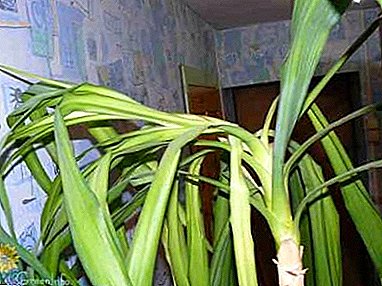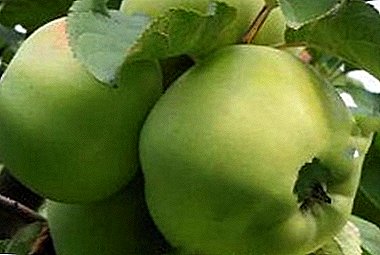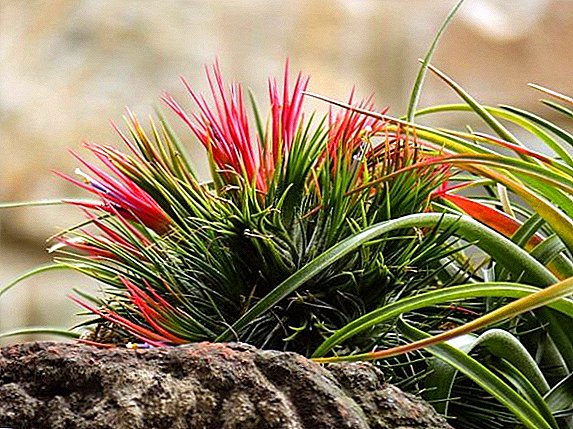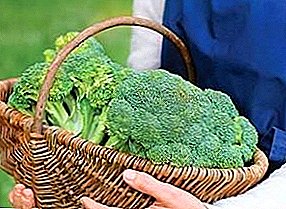 For beginning livestock breeders, the first calving is a very joyful and at the same time exciting phenomenon, because the life of the mother and her offspring will depend on his success.
For beginning livestock breeders, the first calving is a very joyful and at the same time exciting phenomenon, because the life of the mother and her offspring will depend on his success.
How is the pregnancy in cows, how long it lasts, and how to properly care for calves - consider next.
How many days does the cow carry the calf?
The question of the duration of pregnancy in a cow worries many novice farmers. After all, having correctly determined the date of the upcoming birth, you can qualitatively prepare for it and create the most comfortable conditions for the animal.
Find out how the cow pregnancy goes.
Fine
Normally, pregnancy in cattle lasts nine months or 285 days. However, this period may be shortened or extended due to a variety of reasons. This happens rarely, but sometimes it happens. The birth of a calf ahead of time, for several days or even for a whole month, may be due to poor conditions and poor nutrition.

The period of pregnancy lasts differently, depending on the precocity of the animal, the sex of the future baby, the individual characteristics of the organism. Normal periods of pregnancy are from 240 to 311 days.
Did you know? Scientists have proved that female calves are always born 1-2 days earlier than bullheads. In addition, malnutrition and a deficiency of vitamin-mineral substances in the diet delay the pregnancy by 10-12 days.
How much can carry
In some cases, a female cow can carry a calf, and for a period of several days to several weeks. This fact is influenced by the diet of the animal, in particular, the lack of necessary micro- and macroelements, as well as poor conditions of housing and care.
Signs of approaching calving
It is especially important for owners of cattle breeding farms to know the main features of the approaching calving in a cow in order to prepare for the process in time and provide the animal with competent assistance.
 Vaginal discharge from a cow before giving birth
Vaginal discharge from a cow before giving birth
A few days before the intended delivery, it is recommended to establish careful control over the female and watch her behavior.
Find out what secretions a cow has before and after calving.
The indications of labor activity are evidenced by the following signs:
- the animal becomes restless, fearful, refuses food and water;
- udder significantly increases in size, colostrum is released from the nipples;
- genitals swell and become reddish;
- the stomach starts to sag and falls.
How to determine that the cow will soon give birth: video
Important! During this period, it is categorically impossible to lose sight of the cow, since childbirth can occur uncontrollably, which can result in great risks both for the mother and for her offspring.
How a cow gives birth and how to help
At the first signs of an approaching calving, the farmer should conduct a series of preparatory activities, which include:
- disinfection stall, whitewashing the walls of the room, cleaning of debris;
- laying in a stall instead of the old litter material dry and fresh straw;
- washing the back of the cow, processing a weak solution of potassium permanganate or creolin of the birth canal.
Learn more about the hotel cows.In order not to miss the beginning of the process, you need to follow the cow every hour. As soon as the contractions begin, the animal will know about it: it walks restlessly, mumbles, turns around from foot to foot, periodically gets up and lies down. During this period, and should be disinfected genitals.

The calving process is as follows:
- during childbirth the cow lies on the left side or stands;
- The normal position of the calf's exit is the front hooves up, with the head and torso completely appearing a little later. The birth of a baby with its hind limbs is also not considered signs of pathology and does not require medical assistance. As a rule, the process of leaving a baby is half an hour;
- if after 30 minutes the calf did not come out, was stuck, and the attempts weakened, then help should be given to the animal;
- born baby take on a clean, disinfected piece of cloth and iodine treated his umbilical cord. If the cord does not burst during calving, it is cut off, leaving a length of no more than 15 cm.
Important! After calving, care should be taken to ensure that the afterbirth is released. This occurs no later than 6 hours after delivery. If the afterbirth has not moved away, you should pull it out yourself.
How to take birth at the cow: video
Immediately after calving, cows are given warm, sweet water, and two hours later they are decanting the milk, which is watered by the newborn. They also cleanse the cow: using warm water and soap, wash its udder, legs, backside and abdomen.
Features of rearing calves in the suction
In the first days of the life of the calf is placed in a warm, non-residential premises and fed with colostrum. Colostrum contains a large amount of nutrients that protect the baby from possible infections and bacteria, so it is very important to give him 1 liter of colostrum immediately after birth.
In the following days, the calf is given colostrum, warmed up to + 38 ° C, up to five times a day, and in between feedings, warm water is provided.
Important! It is forbidden to drink calf with sour milk, as this may cause digestive problems, in particular, indigestion, diarrhea.
After two weeks, the baby is transferred to three meals a day. At the same time, a little salt and chalk are added to his diet, the use of which makes it possible to compensate for the lack of necessary vitamins and minerals.

By the end of the first month, hay and succulent feed are introduced into the baby’s menu, for which red carrots are considered to be the most useful.
It is advisable to leave the calf on the first day with the mother, so that he has the opportunity to suck the colostrum. In the future, the farmer independently decides how to grow young:
- leave with a cow on the ground;
- to feed under the cow-nurse;
- feed the cub by hand.
Did you know? One of the most important stages in the formation of young animals is the children's play of calves. They allow to develop and improve the nervous system, to acquire certain skills, to accumulate the first life experience.
The first option is the most convenient and simple, because the cow takes great care of her baby herself. Calves are taken away from mothers when they are 7-8 months old.  As for the nutrition of the young mother, then in the first hours after giving birth, she is given a little soft hay, and starting from the second day they include bran porridge, not more than 1 kg in portion. The basis of the menu of the animal should be hay: 3 kg per 100 kg of body weight.
As for the nutrition of the young mother, then in the first hours after giving birth, she is given a little soft hay, and starting from the second day they include bran porridge, not more than 1 kg in portion. The basis of the menu of the animal should be hay: 3 kg per 100 kg of body weight.
It is recommended, in order to avoid problems with digestion, to chop or steam the hay before feeding. Gradually, by the end of the week it is allowed to add succulent feeds to the ration, for example, beets, pumpkin.
Learn what to do after giving birth to a cow, how to keep calves, how to feed cows in winter.
The main task of the farmer in this period is to provide the animal with a sufficient amount of nutritious food and not to allow him to lose weight. Burenka is transferred to the usual diet for 20-30 days after calving.
The appearance of the new inhabitants of the barn is an important and responsible event that requires careful preparation. During the period of pregnancy, the cow needs increased attention, proper care, and a balanced diet. Creation of comfortable conditions for the animal and timely assistance will minimize the possible risks and quickly restore its condition after birth stress.
Reviews
The duration of pregnancy is the period from fertilization of the female to childbirth. Since it is impossible to determine the time of fertilization, the beginning of pregnancy is considered to be the day of the last insemination of the female. Conditions of care, care, feeding, breed and other factors influence the duration of pregnancy. The first pregnancy is longer than repeated. Males are harvested for 1-2 days longer (I usually have a week, and little girls almost a day a day). Later, I will scan the pregnancy calendar. To determine the approximate onset of labor, you should add an average period of 285 days to the date of the last insemination. The oscillations are 270-300. According to their own, he noticed that he stopped eating on a calving day.
However, all the cows were covered quietly, except for one, from the neighbor, she already has them in years and, in addition, attaches to them. Here he was raped. And so I only saw one, I drove in the morning to the pen, she was already at the gate, waiting for him. I sat down a couple of times and went to graze. The hostess did not even know. I also wrote about my own ones, when he paid a little more attention to them, but he did not see the process itself. Here is the second bull for all the time keeping the horned, does not splash zinger in vain.















